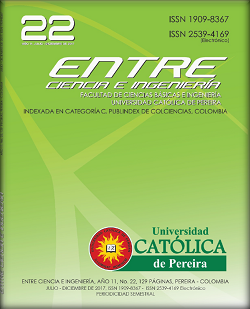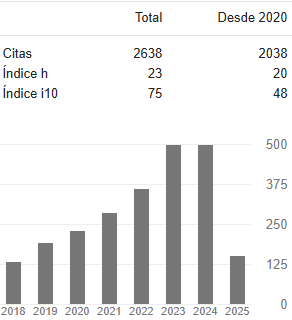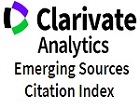A simple and generalized model to estimate the vaporization enthalpy of pure substances
DOI:
https://doi.org/10.31908/19098367.3547Keywords:
vaporization enthalpy, pure substances, modelAbstract
O calor de vaporização de substâncias puras em sua temperatura normal de ebulição é uma propriedade utilizada em diferentes aplicações na indústria de processos. No presente trabalho, uma nova equação generalizada para predizer a entalpia de vaporização é proposta para substâncias puras. A partir de valores de pressão crítica, temperatura crítica, temperatura normal de ebulição e dados experimentais da entalpia de evaporação de 300 substâncias puras e mediante o algoritmo de Lasdon et al., o qual minimiza a soma dos quadrados dos desvios relativos da entalpia de vaporização, foram determinadas as constantes características da nova equação. Para validar o modelo proposto obtido, foram avaliadas 227 substâncias puras, gerando percentuais de desvio relativo de 0.0821%. Os resultados foram comparados com modelos preditivos para o cálculo da entalpia da vaporização, como são as equações de: Riedel, Chen, Trouton, Zhao ey al., Vetere, Liu, Mehmandoust et al., Morgan, Carruth e Kobayashi e os resultados indicam que a nova equação proposta gera uma melhor precisão.
Downloads
References
H. Parhizgar, M. Reza, and A. Eftekhari, “Modeling of vaporization enthalpies of petroleum fractions and pure hydrocarbons using genetic programming,” J Pet Sci Eng, vol. 112, pp. 97–104, 2013.
I. Cachadi and A. Mulero, “Evaluation of correlations for prediction of the normal boiling enthalpy,” Fluid Phase Equilibria, vol. 240, pp. 173–178, 2006.
A. Tatar, A. Barati-harooni, and M. Partovi, “An accurate model for predictions of vaporization enthalpies of hydrocarbons and petroleum fractions,” Journal of Molecular Liquids, vol. 220, pp. 192–199, 2016.
N. Gopinathan and D. N. Saraf, “Predict heat of vaporization of crudes and pure components Revised II,” Fluid Phase Equilibria, vol. 179, pp. 277–284, 2001.
B. Mehmandoust, E. Sanjari, and M. Vatani, “An efficient reliable method to estimate the vaporization enthalpy of pure substances according to the normal boiling temperature and critical properties,” J Adv Res, vol. 5, no. 2, pp. 261–269, 2014.
L. Riedel, Kritischer Koeffizient. “Dichte des gesättigten dampfes und verdampfungswärme. untersuchungen über eine erweiterung des theorems der übereinstimmenden zustände,” Teil III, Chem. Ing. Tech, 26 pp. 679–683, 1954
N. H. Chen, “Generalized Correlation for latent Heat of Vaporization,” J. Chem. Eng. Data, no. 3, pp. 207-210, 1965.
L. K. Nash, “Trouton and T-H-E rule,” J. Chem. Educ., vol. 61, no. 11, pp. 981–984, 1984.
L. Zhao, N. Ni, and S. H. Yalkowsky, “A Modification of Trouton’s Rule by Simple Molecular Parameters for Hydrocarbon Compounds,” Ind. Eng. Chem. Res., pp. 324–327, 1999.
A. Vetere, “A new correlations for predicting vaporization enthalpies of pure compounds,” The Chemical Engineering Journal, pp. 157-162, 1979.
Z. Liu, “Estimation of heat of vaporization of pure liquid at its normal boiling temperature,” Chemical Engineering Communications, pp. 221-228, 2000.
E. Sanjari, M. Honarmand, N. Afshar, and R. S. Esfahani, “A new general correlation for the prediction of the boiling vaporization enthalpy of hydrocarbons,” Thermochim Acta, vol. 556, pp. 30–33, 2013.
J. S. Chickos and W. E. Acree, “Enthalpies of Vaporization of Organic and Organometallic Compounds ,” Journal of Physical and Chemical Reference Data, pp. 1880–2002, 2003.
F. Gharagheizi, “Determination of normal boiling vaporization enthalpy using a new molecular-based model,” Fluid Phase Equilibria, vol. 317, pp. 43–51, 2012.
R.C. Reid, J.M. Prausnitz, B.E. Poling, The Properties of Gases and Liquids, 4th ed. New York: McGraw-Hill, 1987.
D. Wagman, W. Evans, V. Parker, R. Schumm, I. Halow, S. Bailey, K. Churney and R. Nuttall, “The NBS tables of chemical thermodynamic properties,” Journal of Physical and Chemical Reference Data, vol. 11, pp. 2-392, 1982.
L. A. Forero G. and J. A. Velásquez J., “Wagner liquid–vapour pressure equation constants from a simple methodology,” J Chem Thermodyn, vol. 43, no. 8, pp. 1235–1251, Aug. 2011.
D. W. Scott, “Correlation of the chemical thermodynamic properties of hydrocarbons and related substances: Properties of the alkane hydrocarbons, C1 through C10 in the ideal gas state from 0 to 1500K”, US Bureau of Mines, Bulletin 666, 1974. [Online]. Available: http://digital.library.unt.edu/ark:/67531/metadc12811/m2/1/high_res_d/Bulletin0666.pdf
L.S. Lasdon, A.D. Waren, A. Jain and M. Ratner. “Design and Testing of a Generalized Reduced Gradient Code for Nonlinear Programming”, ACM Trans. Math. Softw. pp. 1-45, 1976.
E. Sanjari, “A new simple method for accurate calculation of saturated vapor pressure,” Thermochim Acta, vol. 560, pp. 12–16, 2013.
I. Kikic and A. Vetere, “Evaluation of several literature equations to predict the vaporization enthalpies at the normal boiling point,” Fluid Phase Equilib, vol. 309, no. 2, pp. 151–154, 2011.
H. Reyes, “Determination of thermodynamic parameters and design of a hydrogen fuel cell level pilot plant,” Entre Ciencia e Ingeniería, vol. 8, no. 16, pp. 83-89, 2014.
M. E. Murcia and J. C. Henao, “Educación matemática en Colombia, una perspectiva evolucionaria,” Entre Ciencia e Ingeniería, vol. 9, no. 18, pp. 23-30, 2015.
J. C. H. López and J. L. A. Vargas, “Resultados de un Proceso de Intervención en la Enseñanza de las Matemáticas en Educación Básica Secundaria” Entre Ciencia e Ingeniería, vol. 6, no. 11, pp. 131-148, 2012.
Downloads
Published
Issue
Section
License
Copyright (c) 2018 Entre ciencia e ingeniería

This work is licensed under a Creative Commons Attribution-NonCommercial 4.0 International License.



















